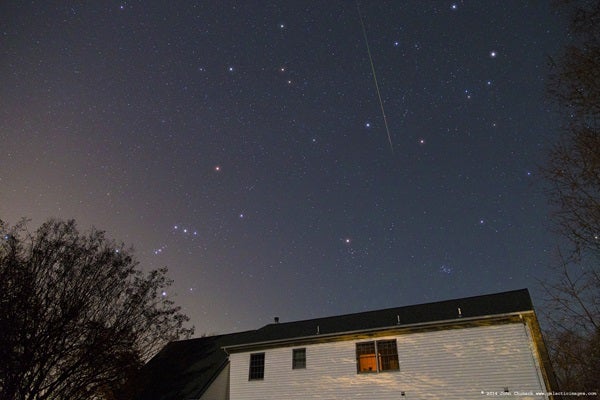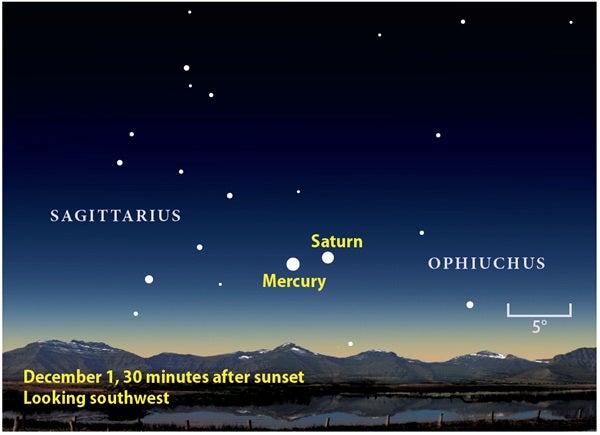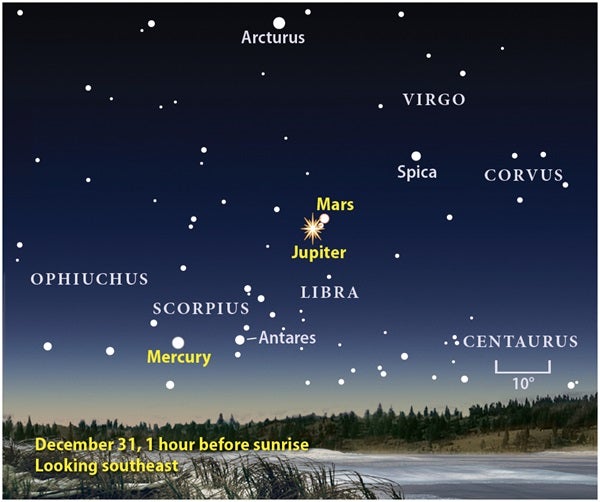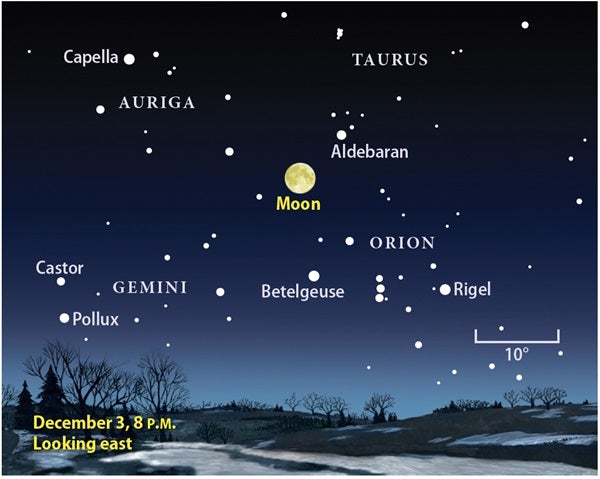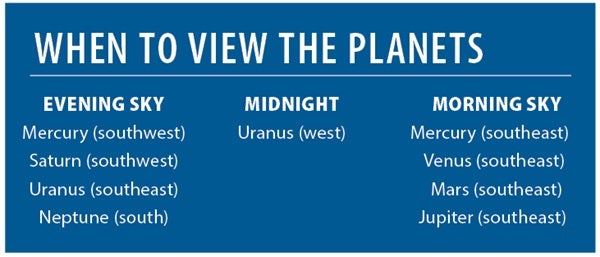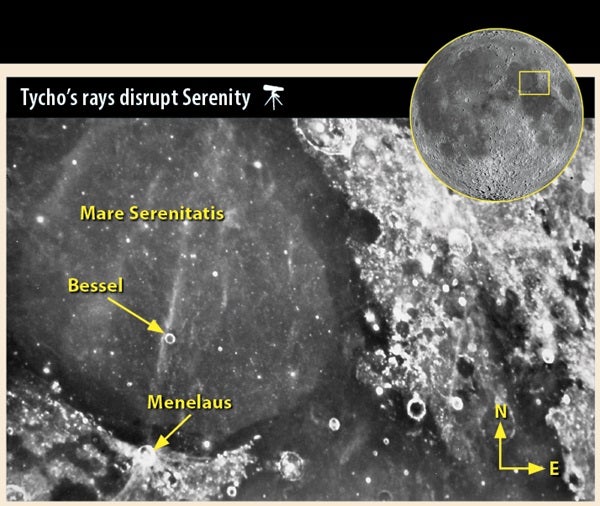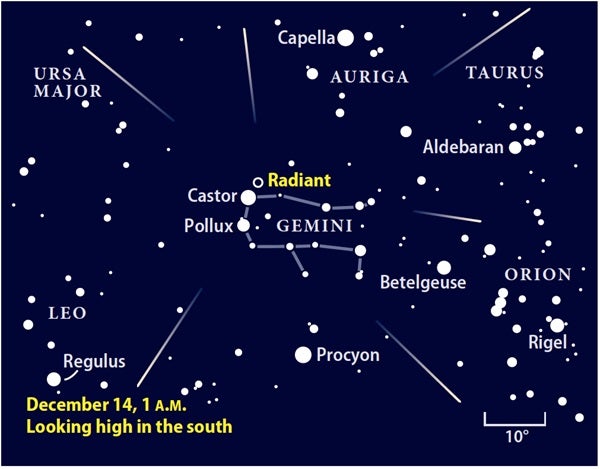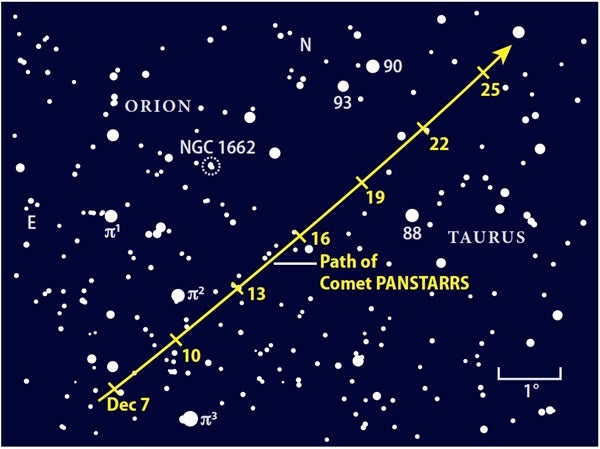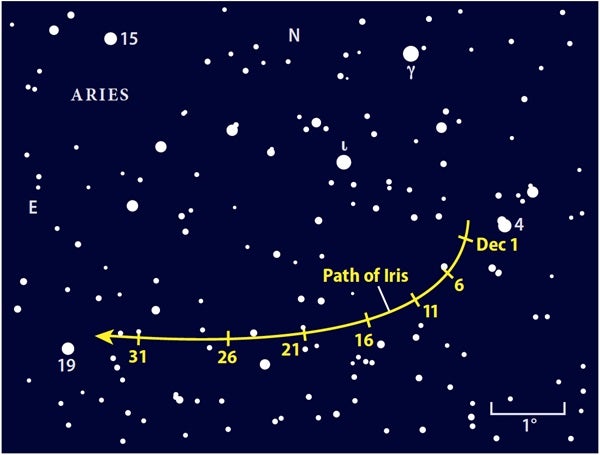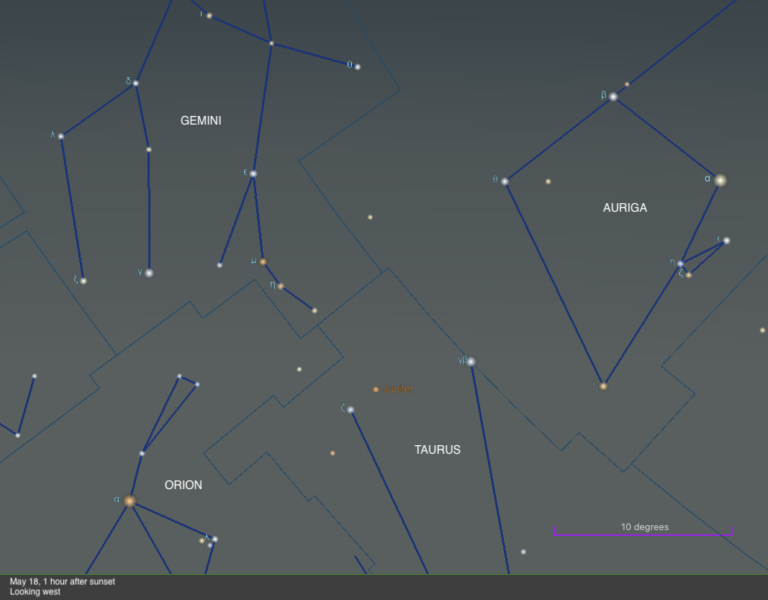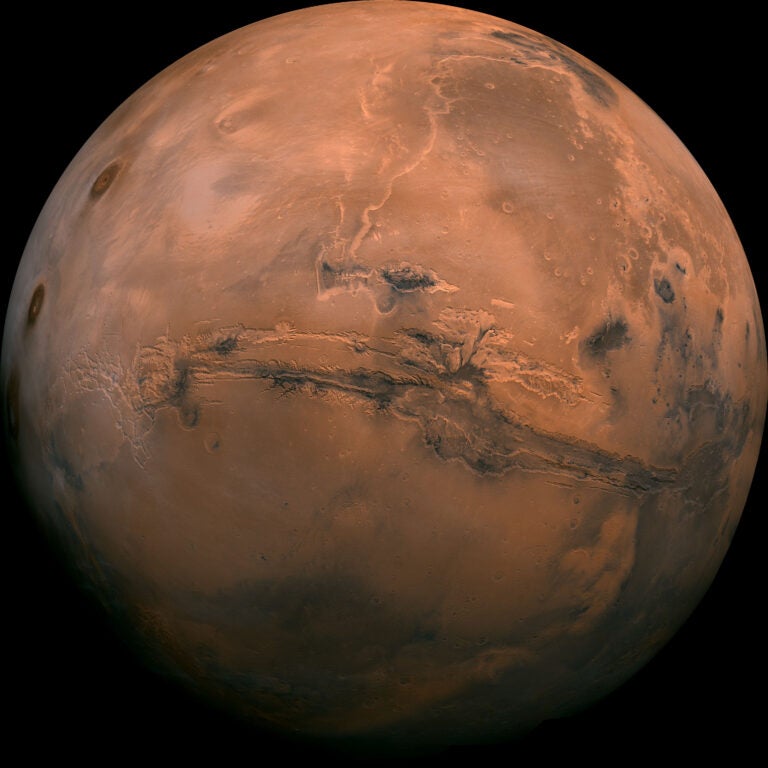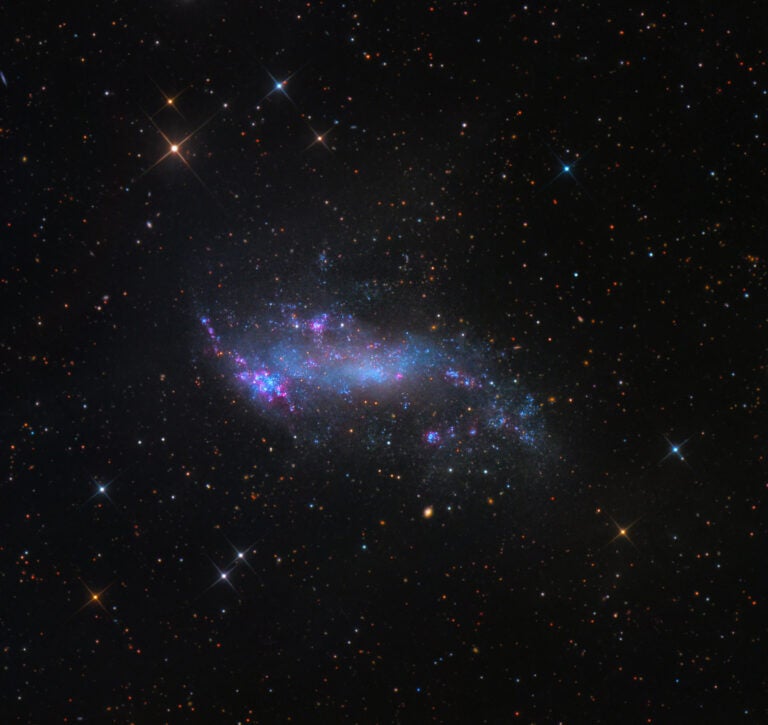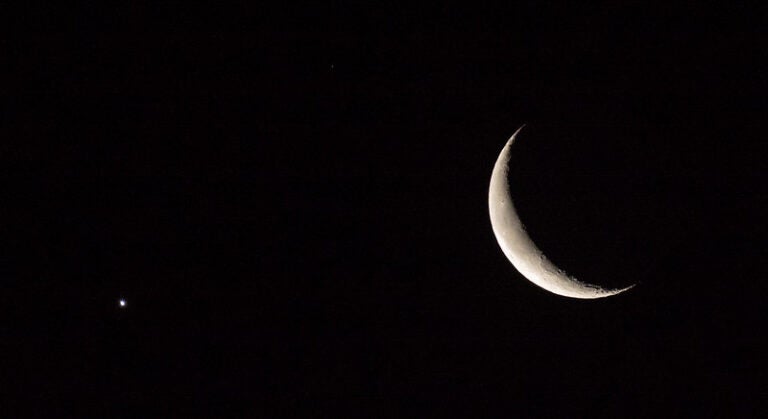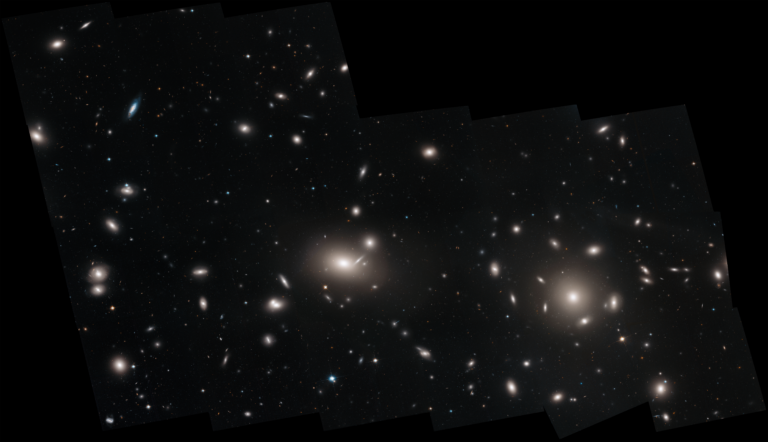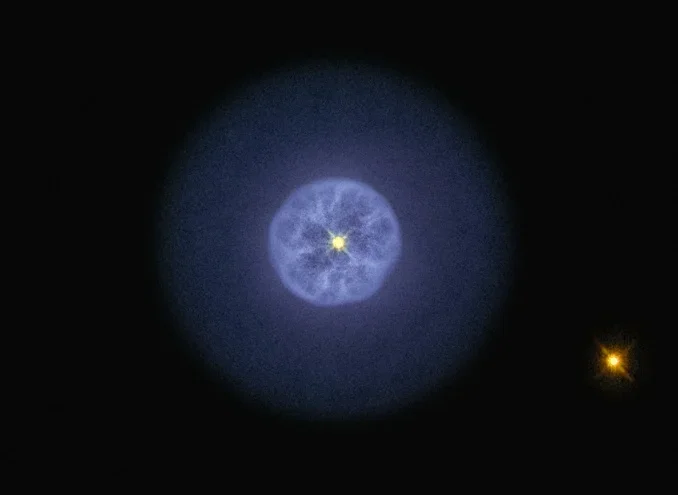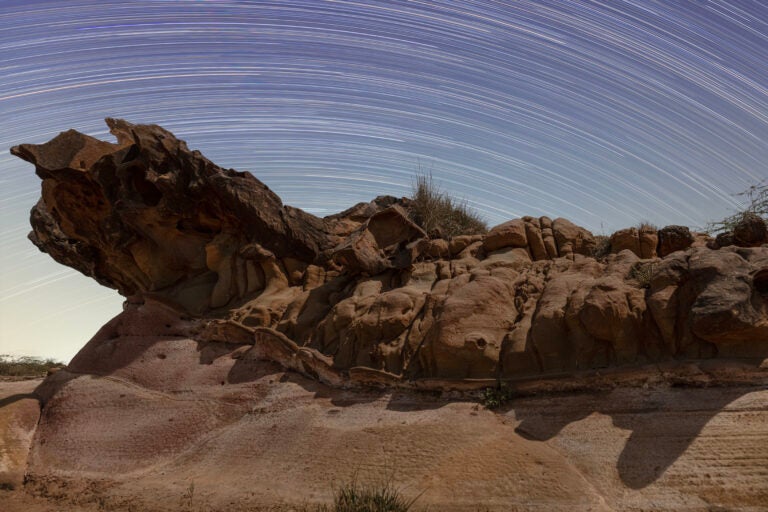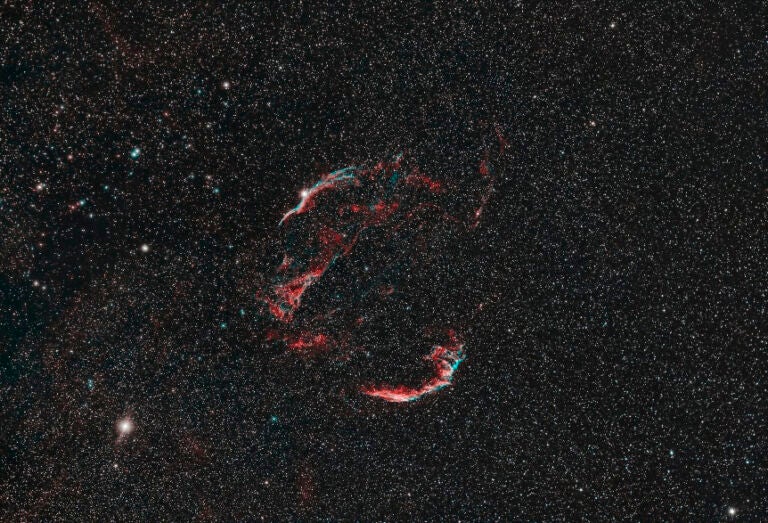You’ll have to look quickly to see the evening’s first two planets. Mercury and Saturn lurk low in the southwest after sunset during December’s first week. On the 1st, they lie within 3° of each other and appear about 5° above the horizon a half-hour after sundown.
Mercury shines at magnitude 0.1 and is slightly easier to see than its magnitude 0.5 neighbor. Both planets dip lower with each passing day and disappear within a week. Mercury also dims quickly, dropping below Saturn’s magnitude by the 4th. The inner planet slides between the Sun and Earth on December 12 and will return to view before dawn at month’s end. Slow-moving Saturn passes on the far side of the Sun from our viewpoint December 21 and will reappear in the morning sky in January.
Once darkness falls these December evenings, the bright winter constellations quickly come to dominate the eastern sky. Far less obvious toward the south are the dimmer aquatic constellations of autumn. But this is where you’ll find both ice giant planets, Neptune and Uranus.
Neptune resides among the background stars of Aquarius the Water-bearer and appears nearly due south after sunset. The distant world glows at magnitude 7.9, so you’ll need binoculars or a telescope to spot it. Fortunately, it has a nearby guide star. Once you center 4th-magnitude Lambda (λ) Aquarii in your binocular field, Neptune already will be in your sights. The planet spends the first half of December just 0.6° (slightly more than the Full Moon’s diameter) south of Lambda. Neptune’s slow eastward motion carries it to a position 0.5° southeast of the star by the end of the year.
Shift your gaze one constellation east and you’ll be among the faint stars of Pisces the Fish, current home to Uranus. Although it shines significantly brighter than Neptune, at magnitude 5.7, there’s no bright star nearby to guide you. To get to the right area, start at the southeastern corner of the Great Square of Pegasus, which is marked by magnitude 2.8 Algenib (Gamma [γ] Pegasi). Next, scan nearly 45° to the east-southeast and find magnitude 2.5 Menkar (Alpha [α] Ceti). Uranus lies midway between these two stars.
To zoom in further, locate magnitude 4.3 Omicron (ο) Piscium and magnitude 4.8 Mu (μ) Psc. Halfway between these two suns lies a pretty trapezoid-shaped asterism comprising four 6th- and 7th-magnitude stars in an area 1° wide. Uranus lies 1° northwest of this asterism throughout December. Early in the month, it appears in line with the trapezoid’s northern axis; it lines up with the trapezoid’s southern axis at year’s end. The planet appears noticeably brighter than any of this asterism’s four stars.
A telescope clearly reveals Uranus’ planetary nature.
Shortly after Uranus dips below the western horizon, Mars appears low in the east. The Red Planet rises along with the background stars of Virgo the Maiden around 3:15 a.m. local time in early December. On the 1st, it stands a mere 3° to the left of Spica, Virgo’s luminary. Be sure to notice the stark color contrast between ruddy Mars and blue-white Spica. At magnitude 1.7, the planet shines half as bright as the star.
Brilliant Jupiter rises about 80 minutes after Mars on December 1. You can find the giant world shining at magnitude –1.7 against the backdrop of Libra the Scales. As an outer planet, it moves sluggishly in its orbit around the Sun, and its position relative to the background stars changes slowly. Mars, on the other hand, blazes a faster trail in its smaller orbit, and quickly closes the space between the worlds.
Sixteen degrees separate the two planets on the 1st, but the gap narrows by 3° each week thereafter. A waning crescent Moon appears 5° above Mars on the 13th, with Jupiter 11° below its sister planet. The following morning, a slimmer Moon lies 5° to Jupiter’s upper left.
On December 31, Mars lies 3° west of Jupiter with 3rd-magnitude Zubenelgenubi (Alpha Librae) between them. The planets’ proximity heralds their stunning conjunction at the end of January’s first week, when they will pass within 0.2° of each other.
Of the two worlds, Jupiter proves far more attractive when viewed through a telescope. The gas giant spans 32″ in mid-December and shows plenty of atmospheric detail. Also keep an eye out for the planet’s four bright moons. Disappointing Mars shows a bland disk with a diameter of only 4″.
Mercury reappears before dawn in late December. On the 21st, you can find the innermost planet 6° above the southeastern horizon 45 minutes before sunrise. It shines dimly, at magnitude 0.6, so you’ll likely need binoculars to pick it out of the twilight glow. A telescope reveals the planet’s 8.7″-diameter disk, which appears one-quarter lit.
Mercury becomes much easier to see during the month’s final 10 days as it climbs higher and glows brighter. On the 31st, it appears 9° above the horizon 45 minutes before sunup. Even better, it shines at magnitude –0.3 and should stand out under good viewing conditions. If you use binoculars, look for 1st-magnitude Antares, the brightest star in Scorpius the Scorpion, 10° to Mercury’s right. When viewed through a telescope that morning, the inner world’s disk spans 6.9″ and the Sun illuminates 59 percent of it.
The Full Moon that occurs December 3 likely will garner a lot of attention. That’s because it occurs just 17 hours before our satellite makes its closest approach to Earth during its monthly orbit. The coincidence between the two events means this is the largest Full Moon of 2017, and you can expect to hear the phrase “Super Moon” frequently in the days before.
Just how special is this Super Moon? Luna’s disk spans 33.4′ at its Full phase, which works out to 7 percent more than average. That’s too small a difference for most people to notice, but you can bet a lot of them will go out the evening of the 3rd, see the bright Moon hanging low above the horizon, and be astonished at its size. But it’s really an illusion — viewing the Moon near familiar foreground objects tricks the mind into thinking it looks bigger.
The Moon also takes center stage the afternoon and evening of December 30. Observers across most of the United States and Canada can watch as our satellite occults (passes in front of) the bright star Aldebaran in Taurus. The dark limb of the waxing gibbous Moon covers the star sometime between 6 and 7 p.m. EST — the exact time depends on your location. Observers in the eastern half of the continent can see the disappearance after sunset; the event occurs during daylight farther west. Aldebaran returns to view from behind the Moon’s bright limb roughly an hour later. Check out www.lunar-occultations.com/iota/bstar/bstar for precise times for your viewing site.
Consider doing some sidewalk astronomy at this month’s Full Moon. You can bet the media will hype this as the “Super Moon” because it is 2017’s closest and biggest Full Moon. Although the attention may be a bit misplaced, there’s no harm in taking advantage of it to show Luna to those who’ve never seen it through a telescope before.
Let the weather forecast determine whether to set up the evening of December 2 or 3. Full phase arrives at 10:47 a.m. EST on the 3rd, but being a half-day off from this time won’t affect the Full Moon’s most striking feature: the crater Tycho and its magnificent ray system. The long, white lines formed when the high-speed impact that gouged out the crater excavated bright lunar soil and sprayed it outward.
A dark ring surrounds the 53-mile-wide crater, but the impact scar itself doesn’t look impressive. The rays are another story. Follow the longest ray to the northeast, where eventually it splits Mare Serenitatis (Sea of Serenity) nearly in half.
At the southern edge of Serenity lies the crater Menelaus. The sharp edges and light-hued debris apron of this 17-mile-wide feature are signs of relative youth, just like with the smaller crater Bessel farther along the ray. It appears as if Bessel disrupted the spray from Tycho, creating a sheltered spot on its north side. But it’s tough to be sure because other interrupted rays have no nearby crater.
The lava filling the Serenity basin is more ancient. The darker shade covering the sea’s southern shore is about 3.8 billion years old, while the lighter layer to its north clocks in closer to 3 billion years.
The stars — or at least the Moon — align this month for a terrific display of meteors. The Geminid shower ranks as both the richest and most reliable of the annual meteor showers. It peaks the night of December 13/14 under a slim crescent Moon, whose feeble light won’t interfere even after it rises around 3:30 a.m. local time.
The meteors appear to radiate from the constellation Gemini, which rises around sunset and climbs nearly overhead by 2 a.m. The best views come the morning of the 14th, between roughly midnight and 4 a.m., when observers under a clear, dark sky can expect to see up to 120 meteors per hour.
Geminids are the slowpokes of the meteor world. The dust particles hit Earth’s atmosphere at a mere 22 miles per second before friction with air molecules incinerates them, leaving behind a fleeting, incandescent glow.
Most bright comets gain attention during brief, close passes by the Sun or Earth. But Comet PANSTARRS (C/2016 R2) never comes real close to our star or planet. Instead, this visitor from the Oort Cloud appears reasonably bright because its icy nucleus is ejecting gas and dust at a higher-than-normal rate.
The comet’s large orbit also means that it moves fairly slowly, and it will be a fixture in the evening sky into mid-2018. It pierces Orion’s Shield this month before skimming past the Hyades star cluster in January, the Pleiades in early February, and the bright star Capella in late April and early May.
Plan to observe under a dark sky if you want a detailed view of this dirty snowball in December. Astronomers expect the comet to glow around 10th magnitude, so you’ll need a 4-inch or larger telescope to spot its glow.
Earth crosses the comet’s orbital plane December 12 and 13, an event nicely timed for the dark of the Moon. This special perspective means we see the fan-shaped tail turned edge-on, so it flattens into a line, though the feature might be hidden behind the circular shape of the comet’s head, or coma. PANSTARRS lies within 1° of magnitude 4.4 Pi2 (π2) Orionis these two evenings.
And for a few nights in mid-December, C/2016 R2 glides within a couple of degrees of open star cluster NGC 1662 near the Orion-Taurus border. The cluster appears as a clump of roughly 10 stars, an understated brooch on Orion’s Shield. They shine between 8th and 10th magnitude, however, so they stand out from their surroundings. A 4-inch scope from the suburbs does NGC 1662 justice.
Asteroid 7 Iris arcs gracefully through Aries the Ram during December. This region climbs three-quarters of the way from the southern horizon to the zenith by 8 p.m. local time and doesn’t set until well past midnight. You can hunt for Iris on any clear evening, though it’s best to avoid the month’s first and final days when a nearly Full Moon stands nearby.
Iris fades from magnitude 7.7 to 8.5 in December, which places it within reach of small telescopes from the suburbs and binoculars under a dark sky. Use 5th-magnitude Iota (ι) Arietis and 6th-magnitude 4 Ari as your guides early in the month. On December 5 and 6, drop 1° southeast of 4 Ari to a pair of slightly unequal stars. Iris is the western “star” on the 5th and the southern one on the 6th. A few nights later, Iris appears alone in a field of significantly fainter stars.
Tracking an asteroid for a few months gives you a sense of their retrograde loops — the east-to-west motion outer solar system objects experience as Earth overtakes them in its faster orbit. The retrograde loops of main belt asteroids, like Iris, are smaller than Mars’ and wider than Jupiter’s.

